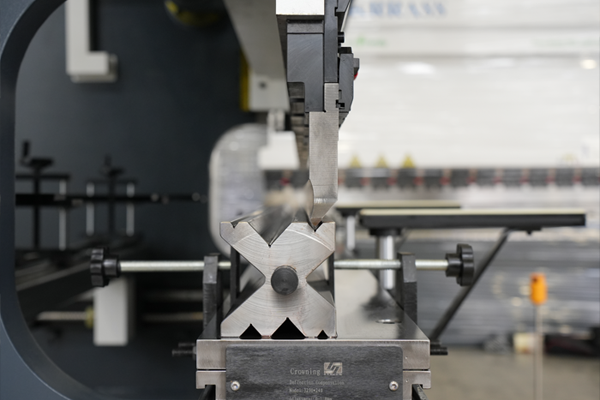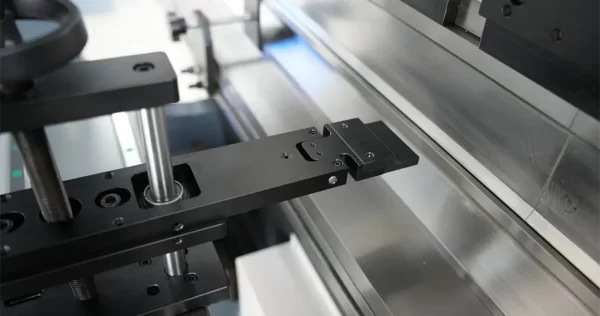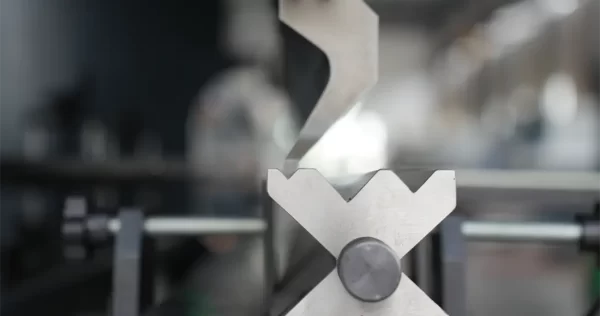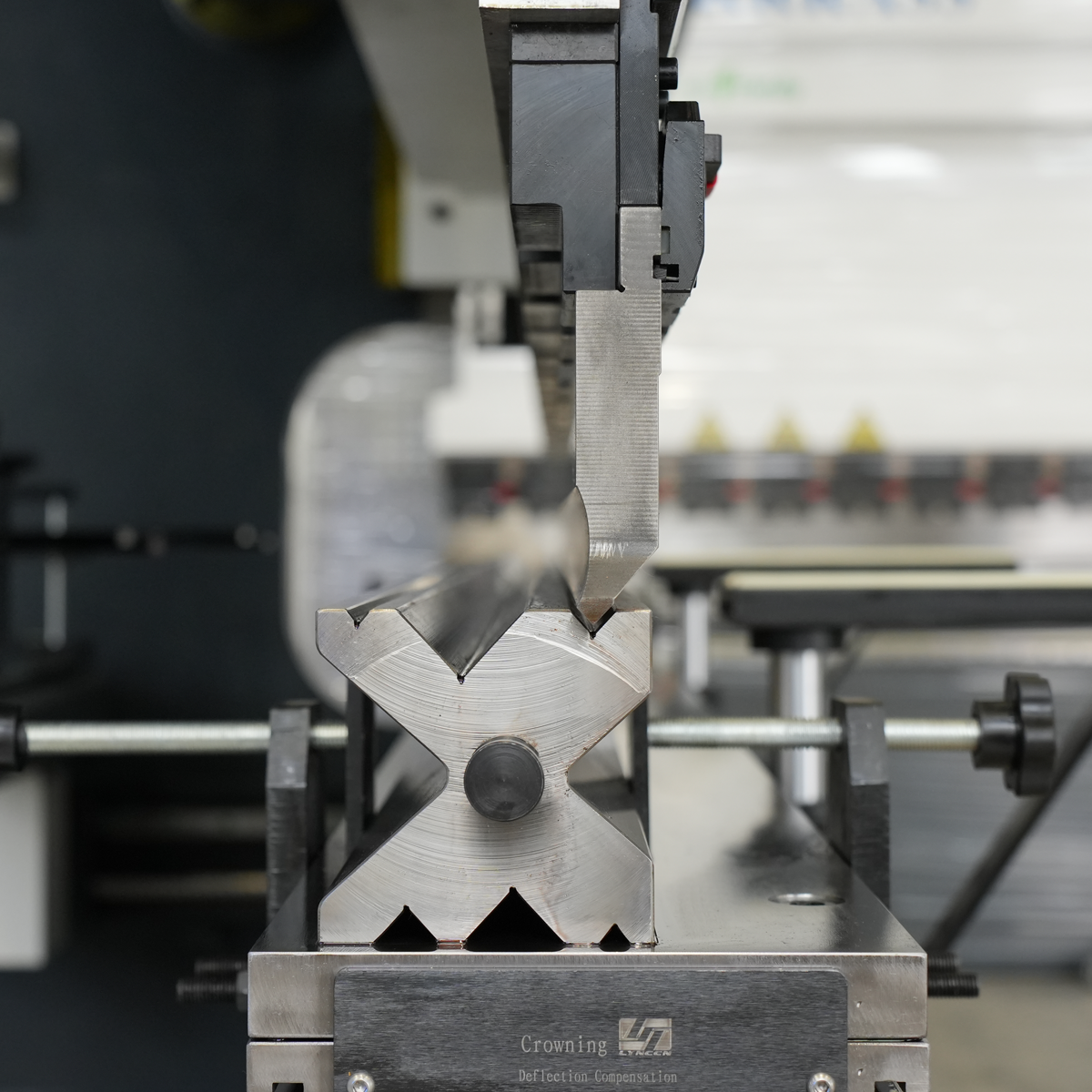Welcome to our in-depth exploration of Press Brake Tooling Essentials. This guide is designed to provide fabricators, engineers, and manufacturers with comprehensive insights into the crucial components of press brake tooling. Understanding the nuances of press brake dies, punches, and the materials used in their construction is fundamental to optimizing your metal fabrication processes. Whether you are new to the world of metalworking or looking to refine your existing practices, this guide covers everything you need to know to make informed decisions and enhance your production efficiency.
- What is Press Brake Tooling
- Definition and Types of Press Brake Tooling
- Materials Used in Press Brake Tooling
- Anatomy of Press Brake Tools: Punches, Dies, Holders, and Adapters
- Types of Press Brake Tools
- Tool Selection and Application
- Choosing the Right Press Brake Tools
- Custom Tooling Solutions
What is Press Brake Tooling?
When it comes to metal fabrication, precision and versatility are paramount. This is where Press Brake Tooling steps in as a game-changer. But what exactly is it? In essence, press brake tooling encompasses the array of equipment used in a press brake machine. This includes but is not limited to press brake dies and press brake punches. These tools are paramount in bending and shaping metal sheets with pinpoint accuracy.
Utilizing high-quality tooling is not just about achieving the desired angles; it's also about enhancing production efficiency and ensuring consistent results. Whether you're working on small-scale projects or large industrial tasks, having the right tooling by your side can significantly streamline your operations. The magic lies in the details – the type of die and punch, their material composition, and their configuration can dramatically impact the final product.
In a typical setup, the press brake punch pushes the metal sheet into the press brake die, creating bends at precise angles. This might sound simple, but the complexity of the process and the precision required cannot be overstated. The right combination of punch and die is crucial for avoiding material waste and achieving optimal performance. This is why understanding the specifics of press brake tooling is essential for anyone in the metal fabrication industry.
In conclusion, press brake tooling is the backbone of efficient metal shaping and bending. It's the unsung hero that ensures the metal fabrication process is seamless, accurate, and efficient. By leveraging the appropriate tools, manufacturers can meet exact specifications and maintain high-quality standards, making press brake tooling an indispensable part of the metalworking industry.

Definition and Types of Press Brake Tooling
Delving deeper into the realm of metal fabrication, we come across a crucial aspect: the definition and the diverse types of Press Brake Tooling. Fundamentally, this tooling refers to the specialized equipment used to bend and form metal sheets in a press brake machine. The tools, specifically press brake dies and press brake punches, serve distinct functions and come in various shapes and sizes to accommodate different bending processes and metal types.
Now, let's talk about the types. Primarily, press brake tooling is classified based on the shape of the die and punch, as well as their specific application. Here’s a closer look:
- Standard Tooling: This includes your typical upper and lower tool sets used in everyday bending tasks. They are versatile and can handle a broad range of bending operations with general applications.
- Precision Tooling: As the name suggests, this type caters to more precise and delicate operations. Precision tooling is engineered to meet exact specifications for high-accuracy tasks.
- Specialized Tooling: This encompasses tools designed for specific, often unique bending tasks, such as forming complex shapes or working with unique materials.
- Wila Tooling, European Tooling, and American Tooling: These classifications refer to the regional tooling standards and designs. Each has distinct characteristics and compatibility, tailored to the needs of metal fabricators in different geographical locations.
Choosing the right type of press brake tooling is critical for achieving the desired results in metal fabrication. The selection process involves considering the material thickness, bending angle, and specific metal type. By understanding the differences and applications of each tooling type, fabricators can enhance their operations, reduce waste, and ensure the quality of their products.
Materials Used in Press Brake Tooling
The effectiveness of Press Brake Tooling largely hinges on the materials from which they are made. The choice of material not only affects the tool's lifespan but also its performance and suitability for specific bending tasks. Let's explore the common materials used in the manufacture of press brake dies and press brake punches, and understand their impact on the tooling's efficacy.
Tool Steel: A popular choice for many manufacturers, tool steel is prized for its durability and resistance to wear and tear. Often, tool steels like D2 or A2 are used, which are known for their hardness and ability to retain shape under stress. This makes them perfect for high-volume or intricate bending operations.
Carbide: For operations requiring extreme precision and longevity, carbide is the go-to material. Although more expensive, carbide tooling offers exceptional durability and resistance to wear, making it ideal for heavy-duty applications and for working with very thick materials.
Alloy Steel: This is another common material, especially for punches, due to its strength and flexibility. Alloy steel can withstand high stress and is less prone to cracking than other materials, which is crucial for maintaining the accuracy of bends over time.
Hardened Steel: Often used for both dies and punches, hardened steel provides a good balance between durability and cost. It is treated to enhance hardness and resistance to surface wear, making it suitable for moderate to high-volume bending tasks.
The selection of material for press brake tooling should align with the specific needs of the bending process, including the type of metal being bent, the required precision, and the volume of production. By choosing the appropriate material, fabricators can significantly improve their efficiency, reduce tool changeovers, and produce consistently high-quality parts.

Anatomy of Press Brake Tools: Punches, Dies, Holders, and Adapters
To truly understand the capabilities and versatility of Press Brake Tooling, it's essential to break down its components. Each part of the tooling plays a specific role in the metal bending process. By dissecting the anatomy of press brake tools, namely punches, dies, holders, and adapters, we can grasp their individual functions and how they contribute to the final outcome.
Punches: The punch is the upper component that makes direct contact with the metal sheet. It comes in various shapes and sizes, tailored to different bending operations. The design of the punch significantly influences the bend angle and radius. From straight to gooseneck to hemming punches, each type serves a unique purpose in the bending process.
Dies: Corresponding to the punch, the die acts as the lower component of the tooling setup. The gap and shape of the die determine the angle and radius of the bend. Dies must accommodate the metal sheet thickness and are available in various configurations, such as V-dies, U-dies, and other specialized forms, to suit different bending needs.
Holders: These are the components that secure the punches and dies in place on the press brake machine. Holders must be robust and precisely machined to ensure that the tooling is aligned correctly and remains stable during the bending operation. The accuracy and safety of the bending process heavily depend on the quality and condition of these holders.
Adapters: Adapters are used when standard tooling doesn't fit the press brake machine directly. They bridge the gap between different sizes and types of punches and dies and the machine, allowing for a wider range of tooling options and greater flexibility in metal fabrication processes.
Understanding each component's role and characteristics enables fabricators to optimize their press brake tooling setups for efficiency, precision, and safety. Whether dealing with straightforward bending tasks or complex fabrications, knowledge of the tooling anatomy empowers operators to make informed decisions and achieve superior results.
Types of Press Brake Tools
Beyond the basic components of press brake tooling, there exists a diverse range of tool types, each designed to meet specific bending requirements and challenges. Understanding the types of press brake tools available is crucial for selecting the right one for your metal fabrication needs. Let’s dive into the different types and their unique applications.
Standard Tools: These are the most common types of tools used in press brakes and include standard punches and dies. They are versatile and can be used for a variety of bending operations, making them a staple in many fabrication shops.
Gooseneck Tools: Designed for bending channels or boxes where conventional tools might collide with the material, gooseneck tools have a distinctive shape that allows for deep bends without obstruction.
Rotary Bending Tools: These tools are used for high-speed bending and can reduce marking on the material. Rotary bending is particularly useful for applications requiring a high level of aesthetic finish.
Acute Angle Tools: When sharp bends are needed, acute angle tools come into play. They are designed to create bends smaller than 90 degrees, essential for certain designs and functionalities.
Hemming Tools: These tools are used for hemming, a process where the edge of the sheet metal is folded flat. Hemming tools usually consist of two stages: an acute angle bend followed by a flattening process.
Offset Tools: Offset tools allow fabricators to create Z-shaped bends in one stroke, which is more efficient than traditional methods that require two separate bends.
Each type of tool has its own set of advantages and is suited for particular bending tasks. By understanding these differences, fabricators can choose the most appropriate tooling to optimize their production process, achieve precision in their work, and meet the requirements of their projects effectively.

Press Brake Tools Selection and Application
Selecting the correct tooling for your press brake is more than just matching shapes and sizes; it involves a comprehensive understanding of the material you are working with and the specific bending process required. Let’s unpack the essentials of tool selection and application, ensuring you can navigate the complexities with confidence.
Matching Tooling to Material Thickness and Type
The first step in the selection process is understanding the relationship between tooling and the material to be bent. Different materials and thicknesses require different types of press brake dies and punches. For instance, thicker and harder materials require tooling with greater load-bearing capacities and often wider die openings to accommodate the increased bend radius. Conversely, delicate materials benefit from precision tooling that minimizes the risk of damage.
Selecting the Right Tool for Specific Bending Processes
Each bending process, whether it's air bending, bottom bending, or coining, demands specific tooling attributes for optimal results. For example, air bending, which allows for a variety of bend angles with the same tool, will often require different tooling compared to coining, which necessitates precision-matched punch and die sets. Understanding the nuances of each process guides the selection of the most appropriate tools.
The Role of Tool Length and Height in Effective Bending
The dimensions of your tooling play a critical role in the bending process. Longer tools can handle larger pieces of metal and distribute the force more evenly, which is essential for maintaining accuracy across the length of the bend. Meanwhile, the height of the tooling must be compatible with the press brake and provide enough clearance for the material and part handling. The right combination of length and height ensures not only the precision of the bend but also the safety and efficiency of the operation.
In conclusion, the selection and application of press brake tooling are fundamental to achieving the desired results in metal fabrication. By carefully considering the material characteristics, bending processes, and tool dimensions, fabricators can significantly enhance their bending operations, reduce material waste, and increase overall productivity.
Choosing the Right Press Brake Tools
Investing in the right press brake tooling is pivotal to the success and efficiency of your metal fabrication projects. However, with the myriad of options available, making the right choice can seem daunting. Let’s explore the critical factors that should guide your purchasing decisions, ensuring that you invest wisely and effectively.
Factors to Consider When Purchasing Press Brake Tooling
Several key considerations come into play when choosing your tooling. These include the type and thickness of materials you typically work with, the specific bending processes you employ, and the compatibility of the tooling with your press brake machine. Additionally, consider the versatility of the tooling – can it be used for a variety of applications, or is it designed for a single specific task? Durability and maintenance requirements are also crucial factors, as they directly impact the tooling's lifespan and overall performance.
The Cost-Benefit Analysis of Investing in Quality Tooling
While the initial cost of high-quality press brake tooling may be higher, the long-term benefits often justify the investment. Quality tooling typically offers greater durability, higher precision, and better compatibility with various materials and bending techniques. This leads to reduced waste, lower maintenance costs, and fewer production delays, translating into significant cost savings over time. Conducting a thorough cost-benefit analysis can help you understand the true value of investing in top-notch tooling.
Vendor Selection: What to Look for in a Tooling Supplier
Choosing the right supplier is as important as selecting the tooling itself. Look for vendors with a strong reputation in the industry, proven expertise, and a comprehensive range of products. A good supplier should offer excellent customer support, including technical advice, after-sales service, and the ability to provide custom solutions. Additionally, consider the lead times, availability of replacement parts, and the overall reliability of the supplier. By partnering with the right vendor, you ensure that you not only get the best tools for your needs but also the support necessary to maximize their performance and lifespan.
In conclusion, the selection of press brake tooling requires a careful balance between immediate costs and long-term benefits. By considering the factors outlined above and selecting a reputable supplier, you can ensure that your investment in tooling propels your fabrication processes towards greater efficiency and profitability.
Custom Tooling Solutions
In the diverse world of metal fabrication, sometimes standard tooling solutions just don't cut it. This is where custom tooling comes into play, offering tailored solutions that meet specific project requirements. But when should you consider custom tooling, and what are the benefits and processes involved in designing and manufacturing these specialized tools? Let's dive into the specifics.
When to Consider Custom Tooling: Applications and Benefits
Custom tooling should be considered when standard tools cannot meet the unique requirements of your bending projects. This could be due to unusual shapes, specific bend angles, material types, or sizes that standard tools simply cannot accommodate. Custom tools are also invaluable for optimizing workflow, increasing efficiency, and achieving higher precision in specialized applications.
The benefits of custom tooling are numerous. These tools can significantly reduce production time and costs by eliminating the need for multiple setups or workarounds. They also allow for the creation of unique and complex metal shapes that would be impossible or impractical to achieve with off-the-shelf tools. Furthermore, custom tooling can lead to improved product quality and consistency, enhancing your company's reputation and customer satisfaction.
The Process of Designing and Manufacturing Custom Tools
The journey of creating custom press brake tools begins with a thorough assessment of the specific needs of your project. This includes evaluating the material specifications, desired shapes, and production requirements. Collaboration between your team and the tooling manufacturer is crucial to accurately define the tooling design that meets your exact needs.
Once the requirements are established, the design phase commences. This often involves CAD (Computer-Aided Design) software to create precise 3D models of the proposed tooling. Simulations and analysis might also be conducted to predict how the tools will perform under real-world conditions. After finalizing the design, the manufacturing phase begins, utilizing high-quality materials and state-of-the-art machining processes to create your custom tooling.
In conclusion, while custom tooling may require a larger initial investment compared to standard tools, the long-term benefits in terms of productivity, efficiency, and product quality can be substantial. By understanding when to opt for custom solutions and familiarizing yourself with the design and manufacturing process, you can significantly enhance your metal fabrication capabilities.
Discover Excellence with Krrass
In conclusion, mastering the art of press brake tooling is essential for any fabricator wishing to excel in the metal fabrication industry. With the right tools, knowledge, and techniques, you can significantly enhance the precision, efficiency, and quality of your work. As a leading press brake manufacturer, Krrass remains committed to providing top-tier tooling solutions and expert advice to help you achieve your metalworking goals. Visit our global website at https://www.krrass.com/ to explore our wide range of products and services designed to elevate your fabricating processes. Together, let's shape the future of metal fabrication.
FAQs
What is the most common type of press brake tooling?
The most common type of press brake tooling is standard tooling, which includes a variety of punches and dies suitable for general bending tasks. These tools are versatile and can be used across a range of applications, making them a staple in many fabrication workshops.
How often should press brake tools be maintained?
Press brake tools should be inspected and maintained regularly to ensure optimal performance and longevity. A good rule of thumb is to check the tools for wear and damage before each use, with a more thorough maintenance check scheduled monthly or based on usage frequency and material types being processed.
Can I use the same tools for different materials?
While some press brake tools can be used for different materials, it's essential to consider the material thickness, type, and the specific bending process. Using the same tools for different materials can lead to suboptimal results or tool damage, especially if the materials vary significantly in hardness or thickness.
What are the safety precautions to consider when using press brake tools?
Safety is paramount when using press brake tools. Always wear appropriate personal protective equipment, follow all machine safety guidelines, and ensure that all tools are correctly installed and maintained. Keep hands and other body parts away from active bending areas, and never bypass safety mechanisms or controls.
How do I know when it's time to replace my press brake tools?
Signs that it's time to replace your press brake tools include noticeable wear, such as nicks, cracks, or deformities, a decrease in bending accuracy, or an increase in required force to achieve bends. Regular inspections will help identify when tools are nearing the end of their useful life and need replacement.




